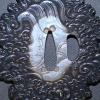-
Posts
791 -
Joined
-
Last visited
-
Days Won
3

Katsujinken replied to md02geist's topic in General Nihonto Related Discussion

Katsujinken replied to Chishiki's topic in General Nihonto Related Discussion

